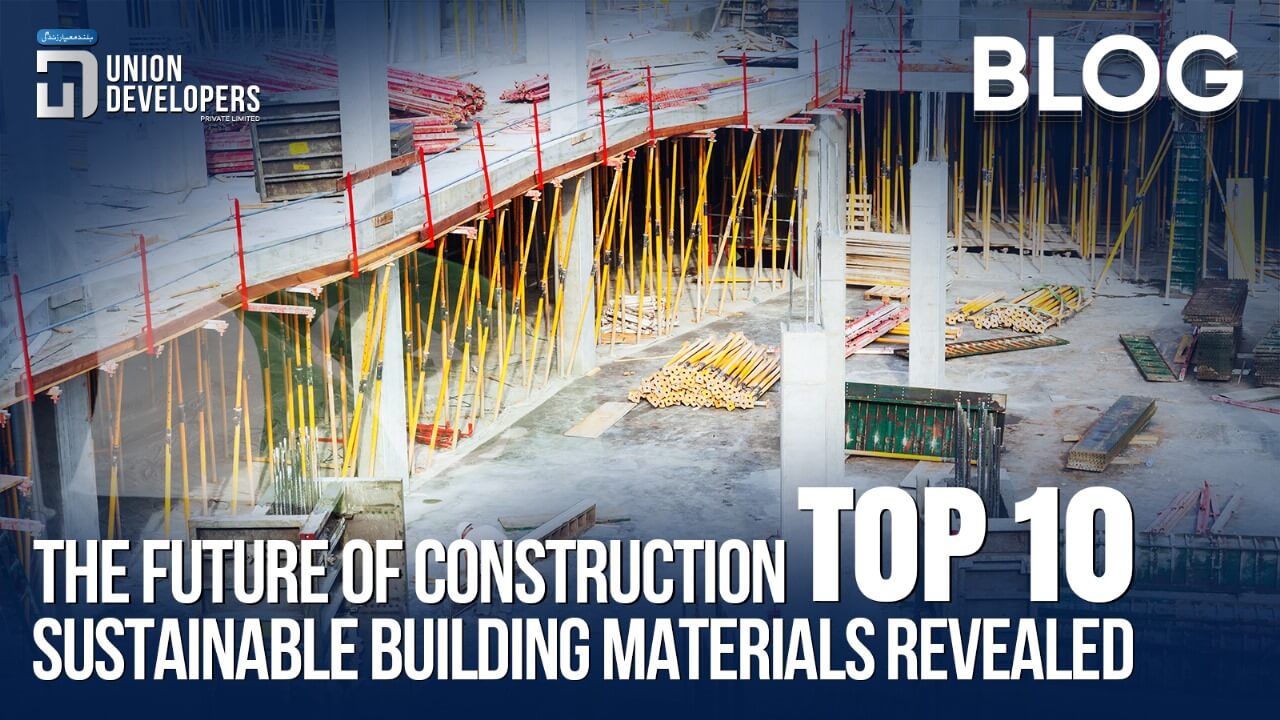Buildings are artefacts of every country’s culture. Think about a house made of bricks, cabins of wood, and complex structures. The building materials are based on scarcity, resource availability, culture and climate. The beauty of its construction and architecture comes from the flexibility of the design.
However, some building materials are sustainable and the construction industry rushes to use eco-friendly construction materials. The construction industry is reducing the use of CO2 emissions and building more sustainability. In this article, we will explore some of the best eco-friendly materials for construction.
Best Sustainable Building Materials
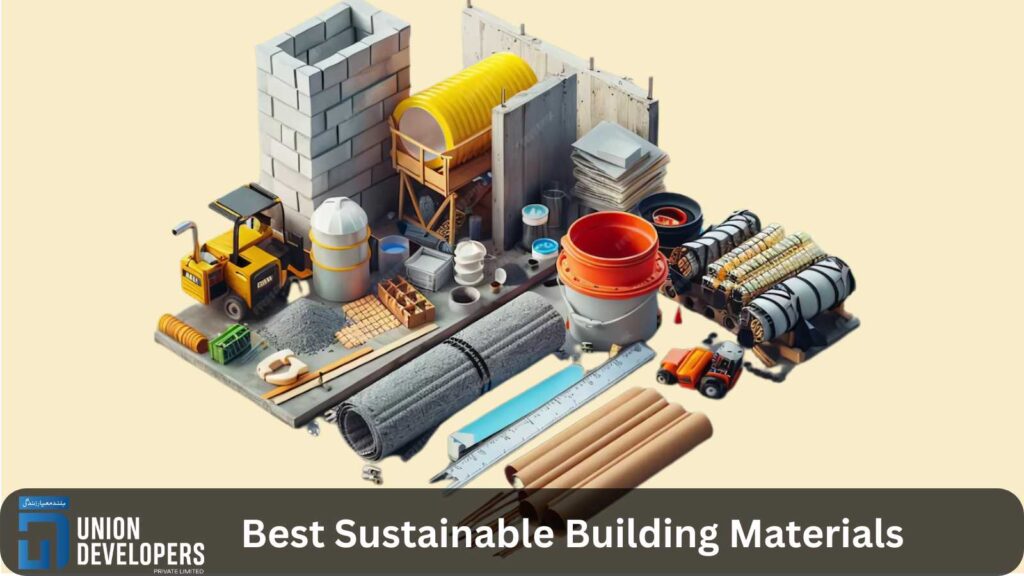
1- Bamboo
Bamboo is one of the fast-growing, flexible, and sustainable materials. It can grow up to 1.5 inches or 3.8 centimetres a day. Bamboo is easily accessible and grows on every continent except for Antarctica, and Europe. It has a high strength-to-weight ratio which makes it a worthy material for economical building materials.
2- Cork
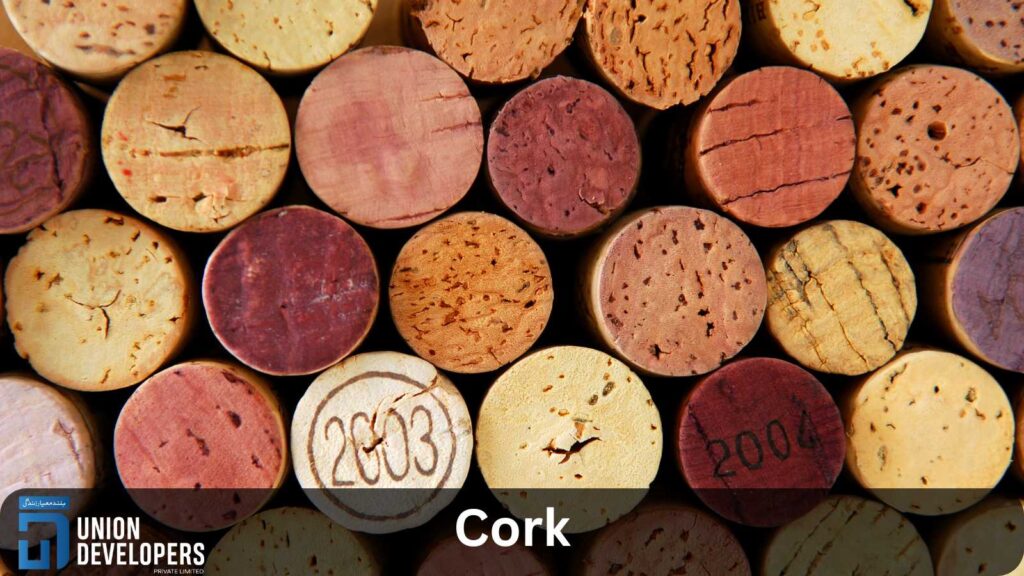
Cork is obtained from a ‘cork oak’ tree, which gets no harm from bark harvesting. It has applications in everyday life such as cork boards and wine corks. However, it is also a great renewable and recyclable building material in the construction world. It is not only lightweight but also waterproof, fire-retardant, and abrasion-resistant. Moreover, It has immense insulation capacities. This is why builders use it in external and internal cladding. It is quite popular among architects and designers due to its neutral tones.
3- Hempcrete
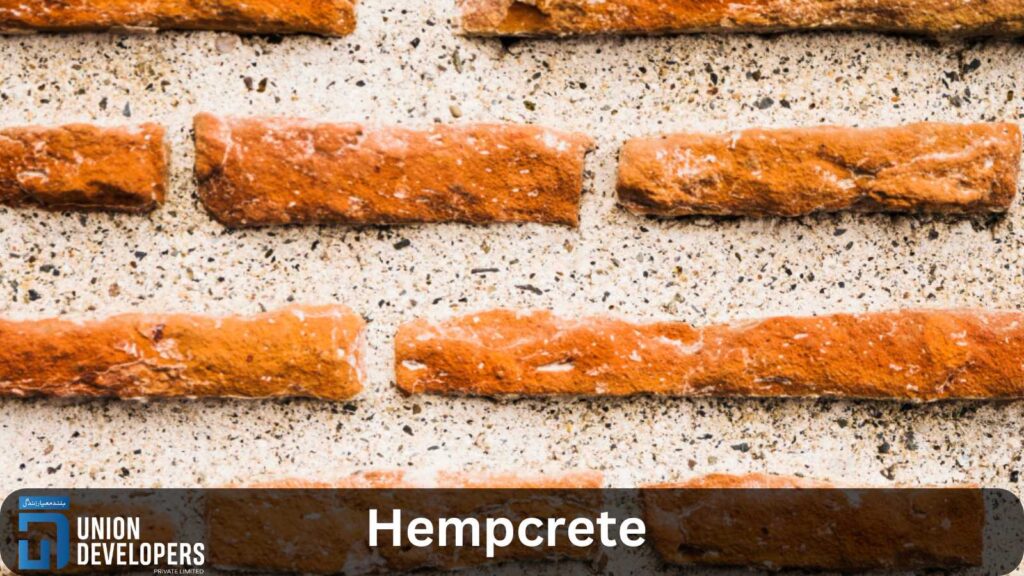
The carbon-negative construction and building materials usage is the new approved concept now. The materials include a minimal embodied carbon footprint and that can absorb carbon dioxide. Hempcrete is a carbon-negative material and hemp fiber is its raw material. This material is similar to timber, but it replenishes faster. Also, it has a concrete shape when combined with lime. It is lightweight and we can use it in construction as an insulator. It has great acoustic and thermal properties. Last but not least, it is fire-resistant as well.
4- Precast Concrete
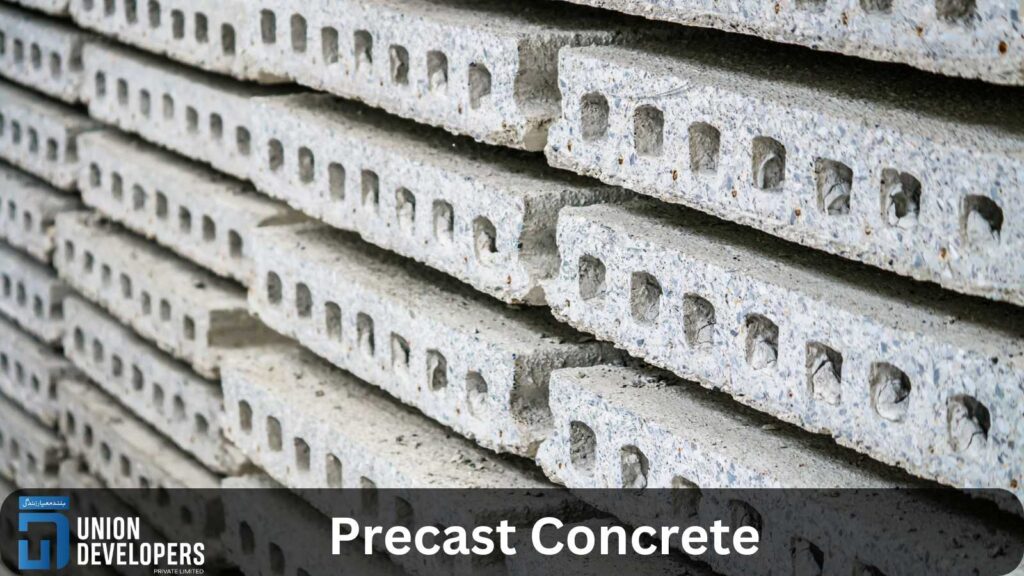
You might not be expecting to see concrete appear in this list but it is a sustainable building material. Precast concrete is made off-site in a factory which reduces CO2 emissions. Manufacturers can ensure exact measurements with pre-cast concrete. It reduces the waste and energy needed to assemble traditional concrete. Precast concrete can be the solution and alternative for the most demanded used materials.
5- Mycelium
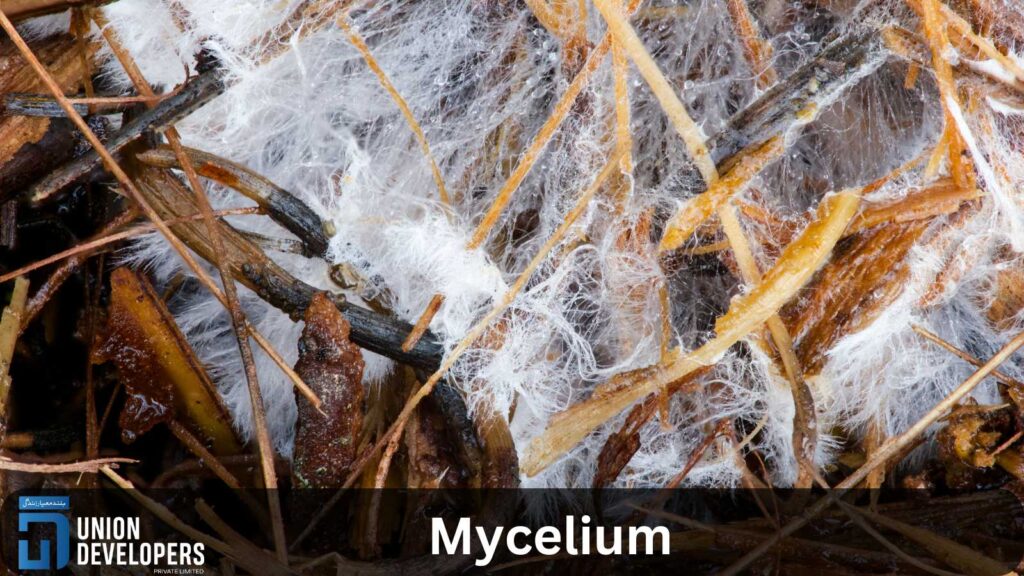
Mycelium plays an important role in green construction. It is a network of thin fungal strands known as hyphae. This is like the root of a plant but in fungi. They vary in size and can be microscopic to giant-sized.
Dried mycelium is used as an environmentally sustainable building material that is mold, water, and fire resistant. This is still in the experimental phase and there is a growing desire to use this biodegradable material in buildings.
6- Recycled Glass
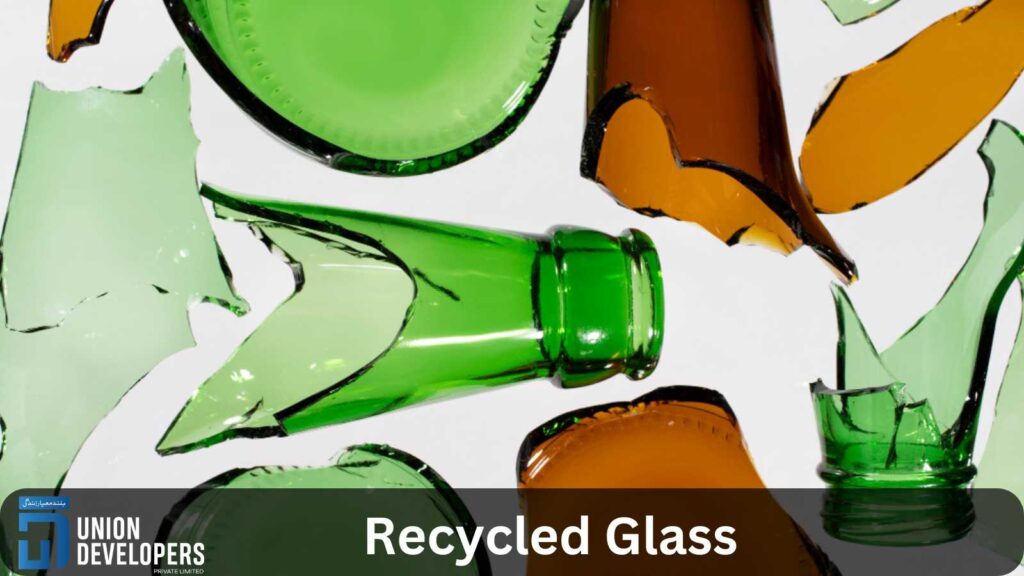
Glass is a tough material to recycle, which is why it is mostly discarded in landfills. This makes to explore its possibilities to be recycled and reused. Additionally, some manufacturing companies already are manufacturing a climate-resistant cement alternative made from waste glass and sequestered CO2. Waste glass can replace natural aggregates such as gravel, sand and crushed stone. It gives great options for more sustainable varieties of cement.
7- Recycled Plastic
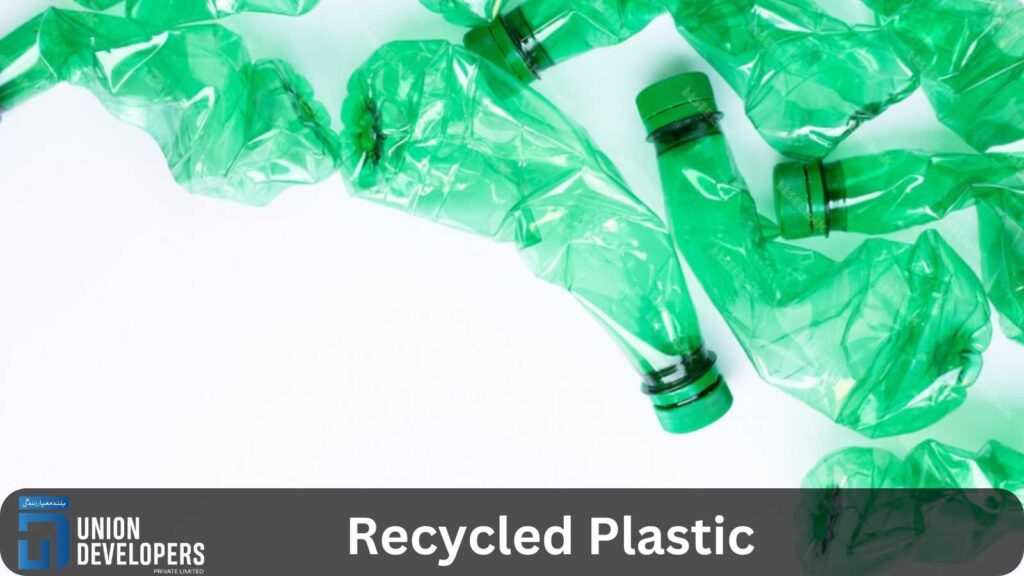
Plastic use is one of the biggest threats to our environment, which is why their reusability is a great opportunity. Recycled plastic can be used to create concrete bricks, plastic sheets, lumber, roofs, pipes, and floors. Its recycled form helps to reduce the waste clogging our landfills and waterways.
8- Recycled Steel
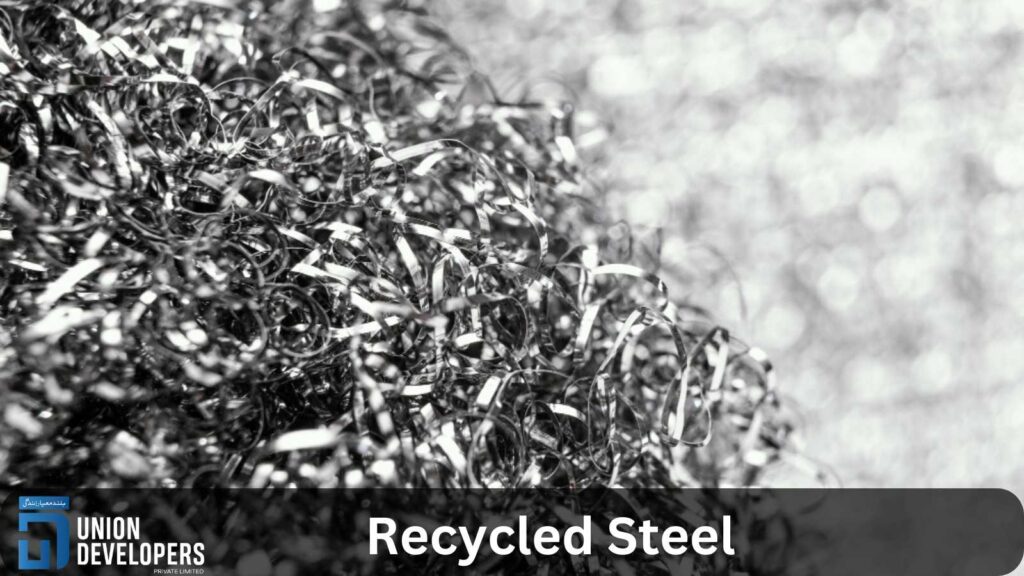
Steel is one of the most recycled construction and building materials. Used steel can be also as good as new material. However, the initial production of steel can be harmful to the environment because of its CO2 footprint. Steel’s recycled version is a great way to project carbon footprint as it has a high demand in the construction industry. It is also long-lasting and does not need continuous maintenance. It helps to reduce operational carbon emissions.
9- Recycled Wood
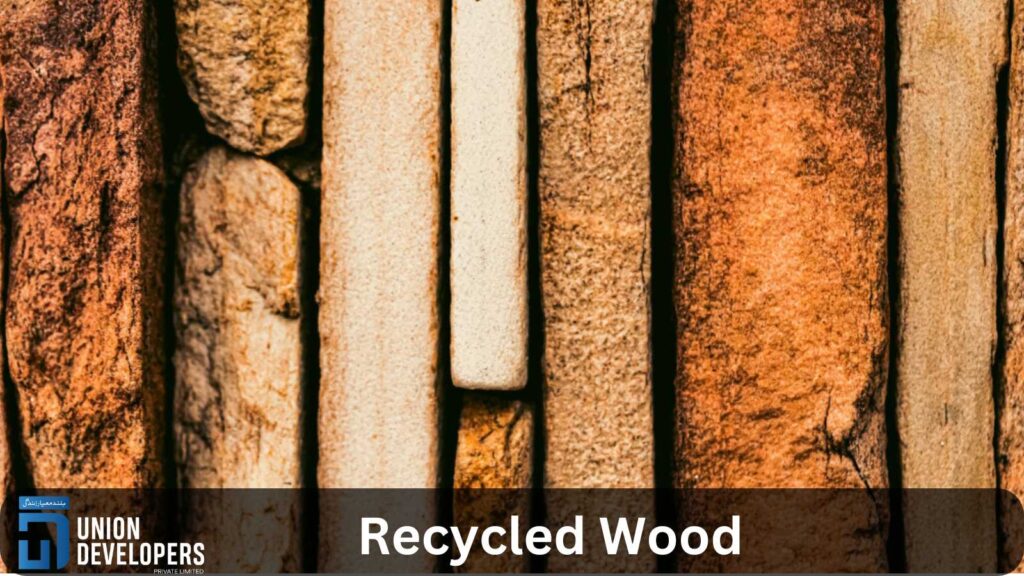
Recycled or reclaimed wood is more than just aesthetics. It is a great building material for creating rustic-style charm. Reclaimed or recycled wood can reduce the amount of wood waste that ends up in landfills.
Reclaimed wood is lightweight but strong and is a great sustainable construction material. It indirectly promotes biodiversity because it reduces the number of trees for harvest.
10- Terrazzo
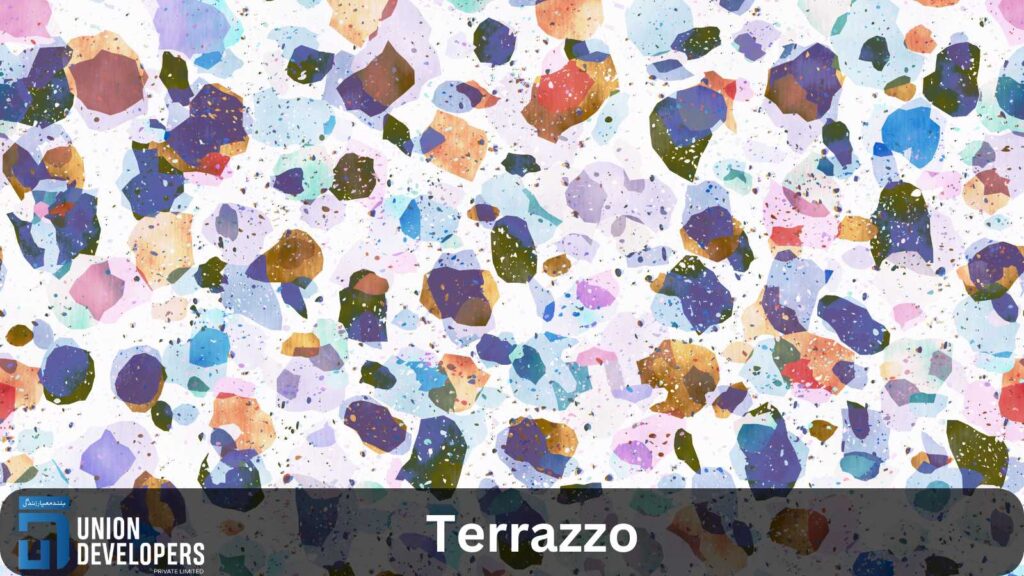
Terrazzo is officially the unique building material on this list. It is a composite material used for countertops. flooring, and stairways. It is made from granite, marble, glass, quartz and other materials. Additionally, it is usually binded with epoxy resin or cement.
Almost 500 years ago, Italy workers used to scrap materials from upscale projects. After that, they reused them in their terraces and residences. Using repurposed raw materials is what makes it an eco-friendly building option. It is cost-effective and also leads to less waste.
In summary: More Sustainable Future
Sustainable and renewable building materials are experimented with and applied in the world of the construction industry. However, we need its wider application for our industry to reduce its negative impact on the environment. That is why construction companies want to use more greener and future-proof manufacturing processes and materials. It is important for construction companies to get the latest updates about the trends in sustainable construction materials.
The future of construction lies in the innovative use of materials that also preserve the planet for future generations. The future is in our hands, whether we want to make it greener or not.
